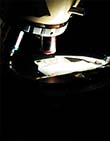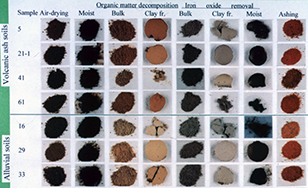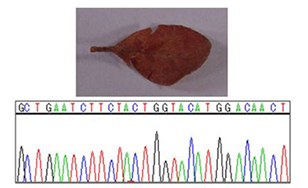The history of each soil differs from a place to a place, and organic matter and iron, which respectively attribute the soils to dark and reddish colors, coat the surface of minerals. Mineral composition in soil also varies depending on its origin and history. Research works are in progress for rapid and more reliable discrimination of soil evidence and provenance estimation by utilizing multiple properties of soil.

Geological and botanical matters are frequently found in our environment, so become trace evidence in criminal cases. Fourth Chemistry section studies on research and development of methods for discrimination, identification, provenance estimation of such trace evidence. We utilize microscopy, instrumental analyses such as scanning electron microscopy with X-ray analysis and X-ray diffractometry and DNA analysis technique. The developed methods are applied to case works, and distributed to prefectural forensic scientists through trainings of the Training Center of Forensic Sciences.
Study on discrimination of geological evidence

Changes of soil color by various treatments and difference among samples
X-ray diffractometry is efficient for discrimination of soil based on clay mineral assemblage.
Study on discrimination and identification of botanical evidence

Sequence of botanical DNA
Real-time PCR for detecting and quantifying DNA in a minute amount of botanical samples
Plant fragments have potential values, providing information of the relationship between suspect/victim and a crime scene. Studies are in progress on morphological inspection and analysis of DNA for discrimination and identification of botanical evidence, and the results are utilized to case works.
